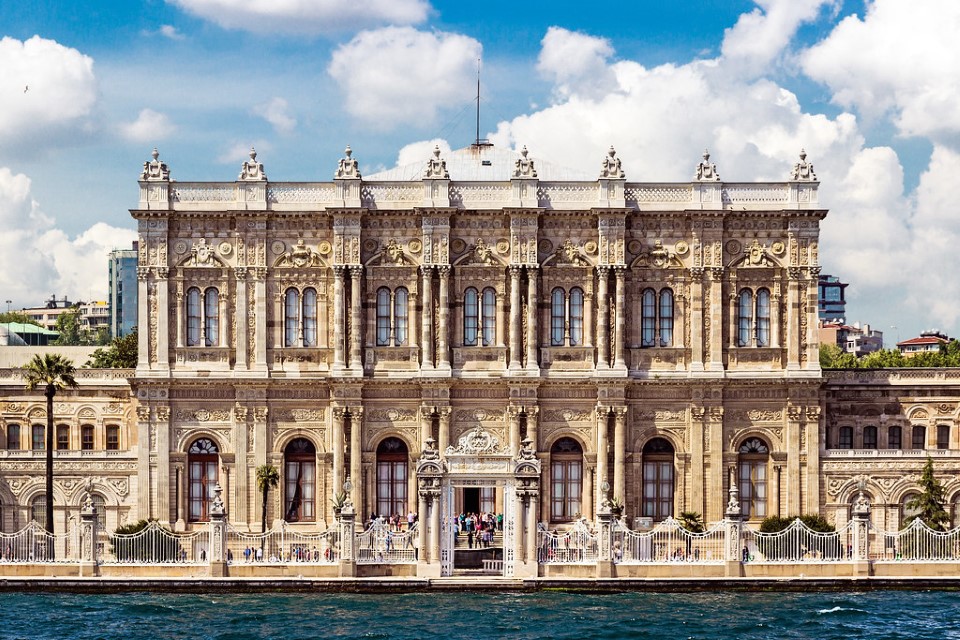Dolmabahçe Palace: The Jewel of the Bosphorus
Introduction
Dolmabahçe Palace, one of Istanbul’s most magnificent landmarks, stands as a symbol of grandeur, power, and transition in Turkish history. Located along the Bosphorus Strait, this lavish palace served as the administrative center of the Ottoman Empire in its later years. With its ornate architecture, extravagant interiors, and historical significance, Dolmabahçe continues to captivate visitors from around the world. From its role as the residence of the last Ottoman sultans to its place in modern Turkish history, this palace is a treasure trove of fascinating stories.
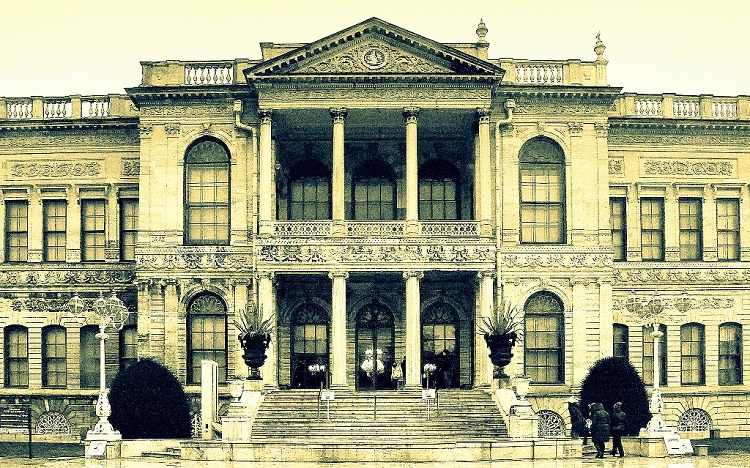
The Origins of Dolmabahçe Palace
From a Naval Port to a Royal Residence
The site where Dolmabahçe Palace now stands was once a natural harbor where Ottoman ships anchored. Over time, the area was reclaimed and transformed into an imperial garden, known as Dolmabahçe, meaning “filled garden” in Turkish.
By the 19th century, the Ottoman Empire was facing increasing Western influence, and Sultan Abdülmecid I decided to construct a European-style palace to reflect the empire’s modernization efforts. Thus, in 1843, construction began under the direction of Armenian architects Garabet Balyan and Nigoğayos Balyan.
Completion and Official Opening
The palace was completed in 1856, and Sultan Abdülmecid moved in immediately, marking a significant shift from the traditional Topkapı Palace to a more contemporary and luxurious setting.
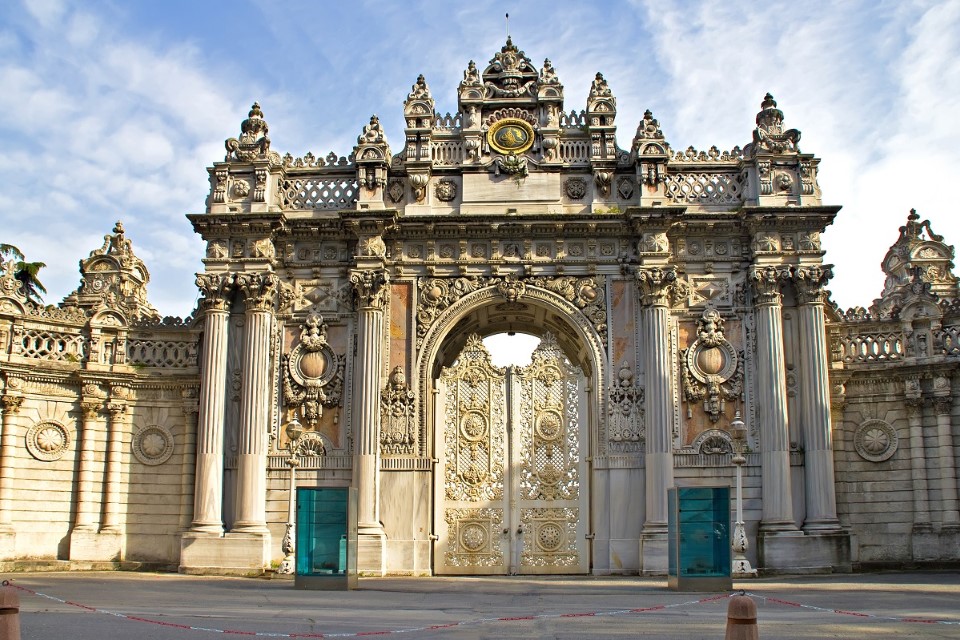
Architectural Marvel of the 19th Century
Blending European and Ottoman Styles
Dolmabahçe Palace was designed in a fusion of Baroque, Rococo, and Neoclassical styles, infused with Ottoman artistic elements. The result was a spectacular palace that stood in contrast to the traditional Islamic architecture of Topkapı.
Key Architectural Features
- Size and Layout: The palace spans 45,000 square meters with 285 rooms, 46 halls, 6 baths, and 68 toilets.
- Crystal Staircase: One of its most famous features, the staircase is made of crystal, brass, and mahogany, creating an elegant visual masterpiece.
- Bohemian Crystal Chandelier: The grand ceremonial hall houses the largest Bohemian crystal chandelier in the world, a gift from Queen Victoria of England, weighing 4.5 tons and boasting 750 lamps.
- Palace Gates: The majestic gates facing the Bosphorus are intricately designed, welcoming visitors with breathtaking elegance.
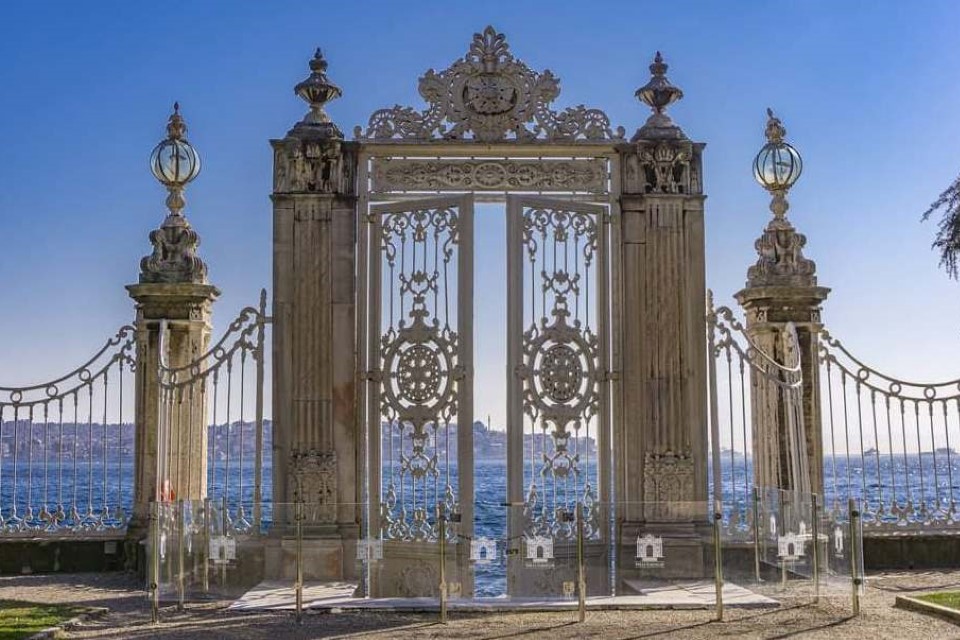
Historical Events at Dolmabahçe Palace
The Last Residence of Ottoman Sultans
The End of an Empire
Dolmabahçe Palace served as the main residence of six Ottoman sultans, including Sultan Abdülaziz and Sultan Abdulhamid II. It remained the center of Ottoman power until 1922, when the empire was officially dissolved.
The Palace in the Turkish Republic Era
Atatürk’s Final Days
Following the foundation of the Republic of Turkey in 1923, Dolmabahçe was used by Mustafa Kemal Atatürk, the founder of modern Turkey, as his presidential residence during his visits to Istanbul.
Atatürk spent his final days in Dolmabahçe, passing away in Room 71 on November 10, 1938, at 9:05 AM. To this day, all clocks in the palace are set to 9:05 to honor his memory.
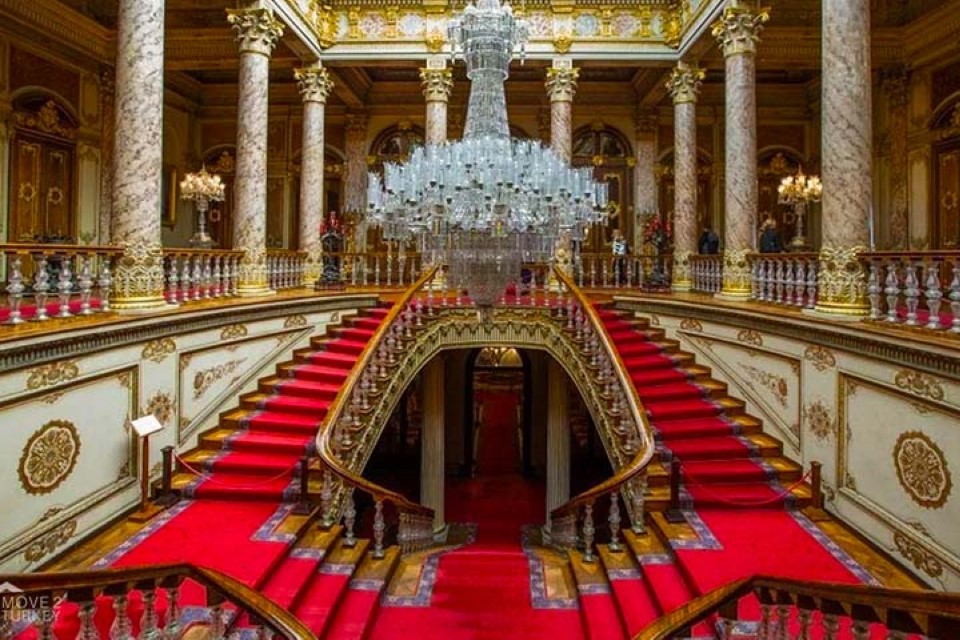
The Interior Wonders of Dolmabahçe
Harem and Selamlık Sections
Dolmabahçe Palace is divided into two main sections:
- Selamlık (Public Area): This section was used for state affairs, official ceremonies, and meetings with foreign dignitaries.
- Harem (Private Quarters): The living quarters of the sultan, his family, and the concubines. It is filled with exquisite decorations, delicate silk carpets, and handcrafted wooden furniture.
The Throne Hall (Muayede Salonu)
The Throne Hall, where the grand chandelier is located, was used for royal ceremonies and receptions. With its high ceilings and golden decorations, it represents the ultimate symbol of Ottoman luxury.
Atatürk’s Room
The room where Atatürk passed away is preserved as a memorial, with its simple furnishings standing in stark contrast to the grandeur of the rest of the palace. A Turkish flag covers the bed, symbolizing national respect.
Dolmabahçe Palace Today
A Museum Open to the Public
Today, Dolmabahçe Palace is open to visitors as a museum, offering guided tours that showcase its historical artifacts, lavish decorations, and fascinating history.
Cultural Events and Exhibitions
- State Receptions: The palace is occasionally used for official government events.
- Art Exhibitions: Some sections host exhibitions featuring Ottoman and modern Turkish art.
- Annual Atatürk Commemoration: Every November 10, thousands gather at the palace to pay tribute to Atatürk.
Conclusion
Dolmabahçe Palace stands as a testament to the luxury, ambition, and transformation of the Ottoman Empire. From being the home of sultans and foreign dignitaries to witnessing the final days of Atatürk, its walls have seen history unfold. Today, it continues to awe visitors with its breathtaking architecture and historical significance. Whether you are a history enthusiast, an architecture lover, or simply someone looking to experience Istanbul’s majestic past, Dolmabahçe Palace is a must-visit destination.
Frequently Asked Questions (FAQs)
Construction began in 1843 and was completed in 1856 during the reign of Sultan Abdülmecid I.
The palace has a total of 285 rooms, 46 halls, 6 Turkish baths, and 68 toilets.
All clocks in the palace are set to 9:05 AM in memory of Mustafa Kemal Atatürk, who passed away in Room 71 at that exact time on November 10, 1938.
Yes, visitors can see Atatürk’s room, which has been preserved as a memorial site, but access is limited to viewing from a designated area.
Absolutely! Dolmabahçe Palace is one of Istanbul’s most spectacular landmarks, offering a glimpse into Ottoman luxury, history, and the early years of the Turkish Republic.
